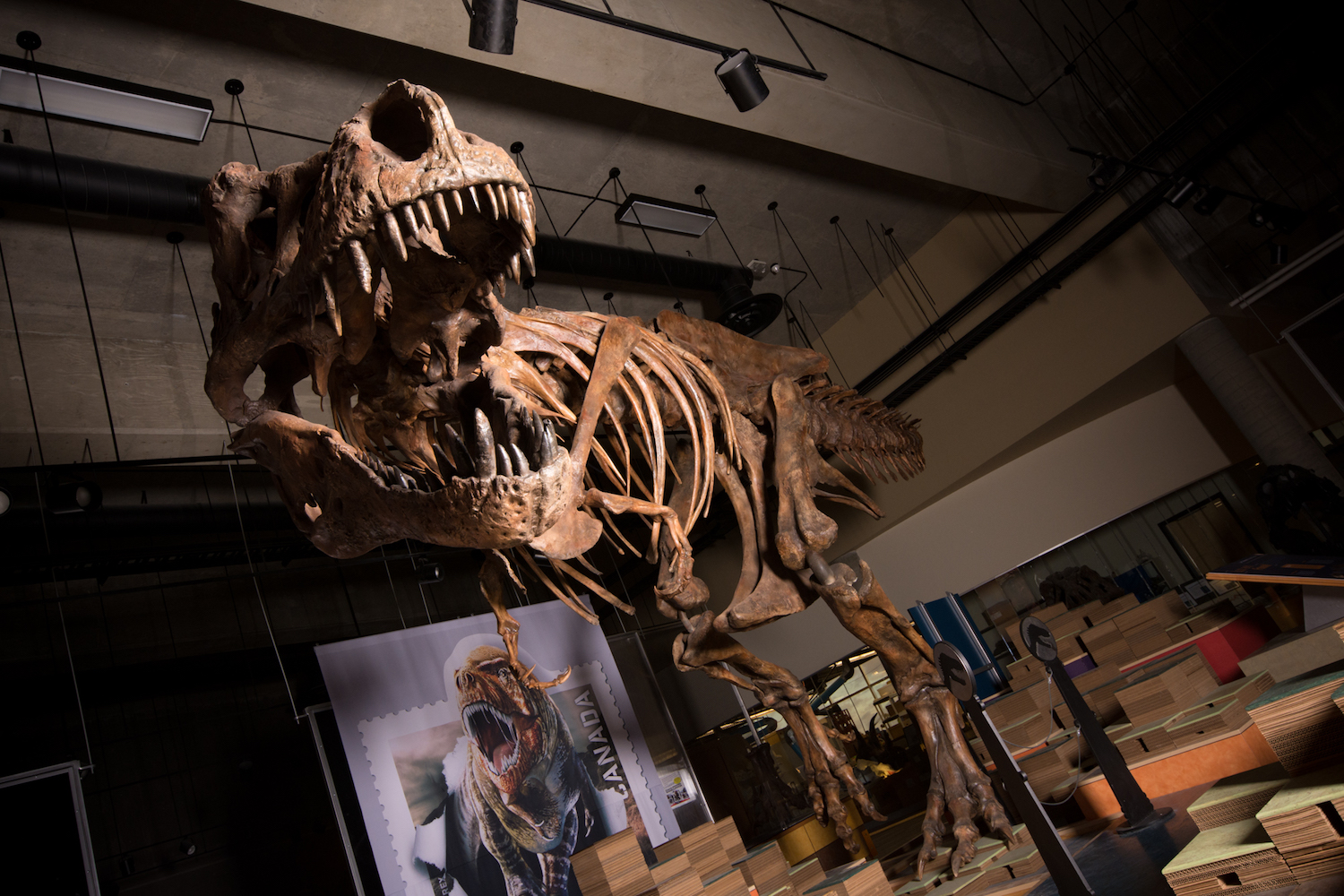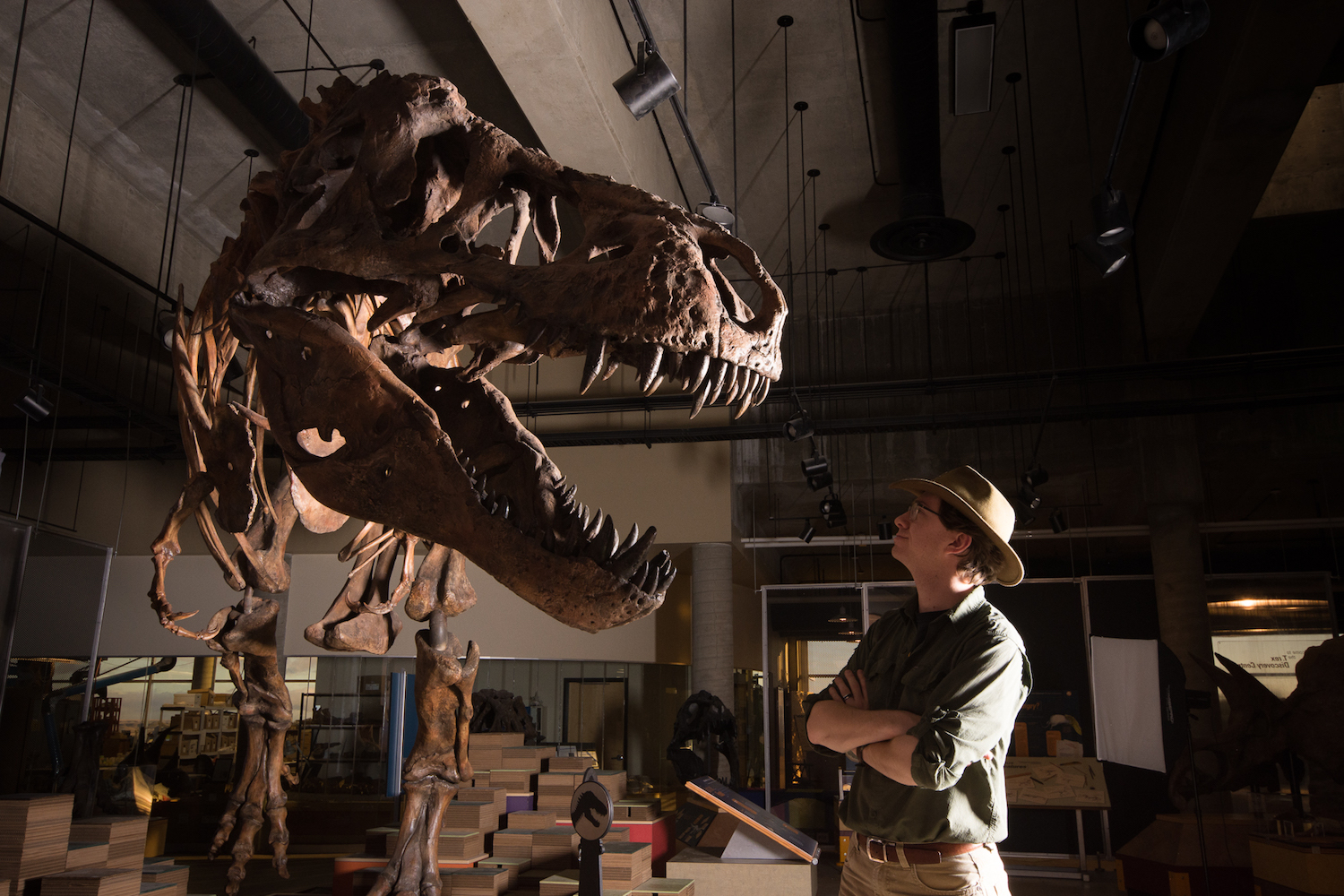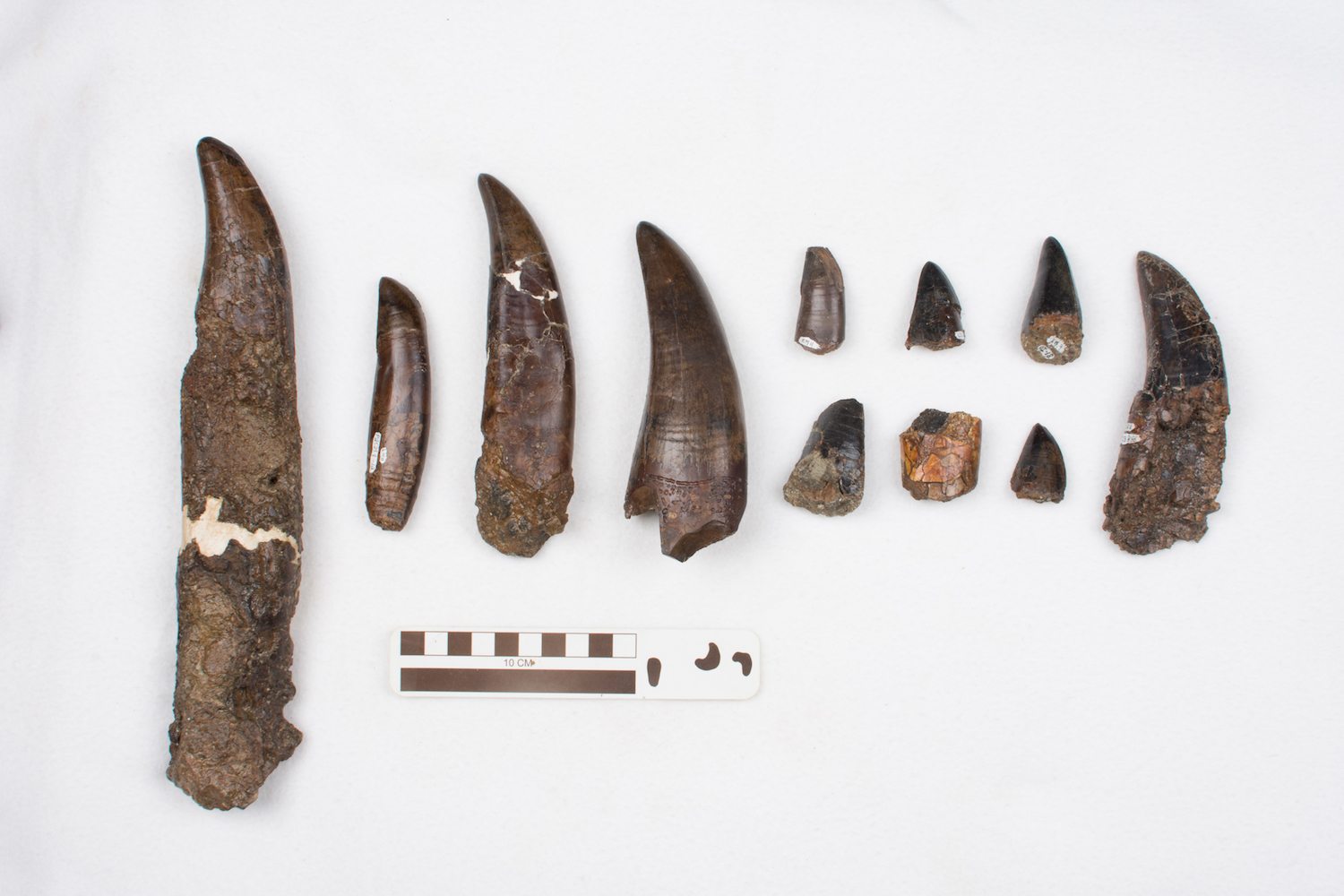Meet Scotty, the New T. Rex Heavyweight Champion of the World

The mightiest Tyrannosaurus rex on record is a behemoth named Scotty, who — during its lifetime on Earth about 65 million years ago — weighed a honking 19,555 lbs. (8,870 kilograms), or about as much as 6.5 Volkswagen Beetles, a new study finds.
Scotty was so massive, it edged out Sue, the famous T. rex at the Field Museum of Natural History in Chicago, as heavyweight champ.
In all, Scotty is about 880 lbs. (400 kg) heavier than Sue, "which is a lot by human standards, but not as much when you're dealing with a tyrannosaur," said study lead researcher Scott Persons, a paleontologist at the University of Alberta. [Gory Guts: Photos of a T. Rex Autopsy]
Researchers originally found Scotty in 1991, near the town of Eastend, Saskatchewan. But it took years to dig out and then prepare the dinosaur king, because the rock the fossils were embedded in was so "gosh darn hard," Persons told Live Science. That rock — heavily cemented sandstone rich in iron — was part of the Frenchman Formation, which dates to the late Cretaceous period, from about 72 million to 65 million years ago.
T. rexes, however, lived for only the last 2 million years of the Cretaceous, or from about 67 million to 65 million years ago.

The researchers were so thrilled at the find, they celebrated it with a toast. "The only spirit that was on hand was on old bottle of scotch," Persons said, which inspired them to name the T. rex Scotty. However, it's unclear whether Scotty was male or female, Persons noted.
After all of Scotty's fossils were prepared, researchers found they had about 65 percent of the skeleton, including the skull, the braincase (the part of the skull that holds the brain); the lower jaw; vertebrae from the neck, back and tail; and parts of the hips, leg and shoulder.
Sign up for the Live Science daily newsletter now
Get the world’s most fascinating discoveries delivered straight to your inbox.
However, Scotty isn't the heaviest dinosaur on record. That honor likely goes to the long-necked Argentinosaurus, who could have weighed up to 110 tons (100 metric tons), according to some estimates. (The feat of determining dinosaur mass is a highly debated subject, as there are different ways to calculate it. In this case, scientists determined Scotty's mass by comparing the proportion of its bones and plugging these measurements into a formula, Persons said.)
Moreover, while Scotty is the heaviest T. rex on record, it's not the longest. A T. rex named Stan, who is on display at the Black Hills Institute of Geological Research, spans nearly 40 feet (12.2 m) from snout to tail. In addition, the most complete known T. rex remains Sue, who is about 90 percent complete.

But Scotty has other claims to fame. For instance, it likely reached its 30th birthday, making it the longest-lived T. rex on record, according to a bone analysis by study co-researcher Gregory Erickson, a professor of anatomy and vertebrate paleobiology at Florida State University. Erickson did this by looking at the growth rings in the dinosaur's bones (like trees, dinosaur bones laid down new rings as they aged.)
Scotty's bones also preserved the dinosaur's dramatic injuries, all of which had healed by the time the dinosaur died. These included a broken jaw, broken ribs and a pressed series of vertebrae that Scotty sustained during its "violent and unusually long life," the researchers wrote in the study.
They added that the "relative scarcity of other equally large and mature T. rex specimens" suggests that these beasts tended to die before they passed the 8.8-ton (8 metric tons) threshold.
Scotty will be on public display at the Royal Saskatchewan Museum in Regina, Saskatchewan, this May. The study was published online March 21 in the journal The Anatomical Record.
- Photos: The Near-Complete Wankel T. Rex
- Photos: Newfound Dinosaur Had Tiny Arms, Just Like T. Rex
- Baby T. Rex Was an Adorable Ball of Fluff
Originally published on Live Science.

Laura is the archaeology and Life's Little Mysteries editor at Live Science. She also reports on general science, including paleontology. Her work has appeared in The New York Times, Scholastic, Popular Science and Spectrum, a site on autism research. She has won multiple awards from the Society of Professional Journalists and the Washington Newspaper Publishers Association for her reporting at a weekly newspaper near Seattle. Laura holds a bachelor's degree in English literature and psychology from Washington University in St. Louis and a master's degree in science writing from NYU.










